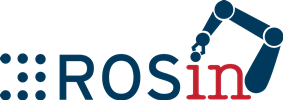Software Quality Assurance
The following points are part of this quality assurance process:
Better structuring of the development process
Technical framework.
Tooling supporting QA processes.
Quality assessment strategy.
Testing methodologies
Use start-of-the-art and novel test-based validation.
Automate unit tests generation.
Exploit model-in-the-loop testing.
Code scanning techniques
Adopting existing state-of-the-art code scanning analysis.
Develop ROS-specific code scanning techniques.
Evaluating symbolic execution and fuzzing on specific components.
Model-driven development
Exploit opportunities to perform code generation for “boiler-plate” code.
Use of models to specify environments for testing and variability management.
Scientific papers, including those on Software Quality Assurance in ROS, are listed on the results page.
You can also visit the ROS Software Quality Hub, an online community hub that will provide a focal point and resources to foster quality related activity in ROS. Please help to grow it in the interest of the entire community.
We encourage you to engage with the ROS QA community on ROS discourse, a dedicated place for quality assurance discussion, where we can explain, promote, develop and discuss QA practices, techniques and tools. This is for everybody, from the quality enthusiast, who cares about quality of ROS, to a community member who has a question or feedback.
You can also visit the ROS Software Quality Hub, an online community hub that will provide a focal point and resources to foster quality related activity in ROS. Please help to grow it in the interest of the entire community.
We encourage you to engage with the ROS QA community on ROS discourse, a dedicated place for quality assurance discussion, where we can explain, promote, develop and discuss QA practices, techniques and tools. This is for everybody, from the quality enthusiast, who cares about quality of ROS, to a community member who has a question or feedback.
